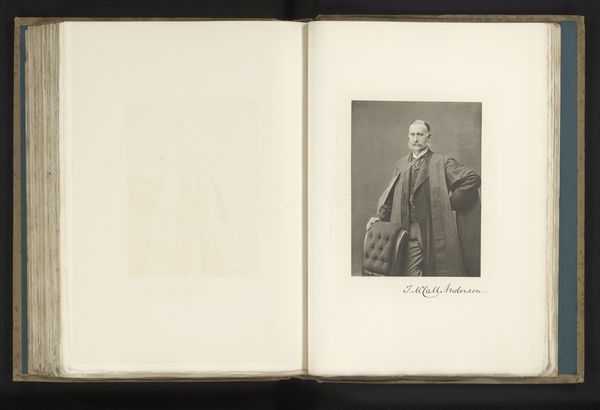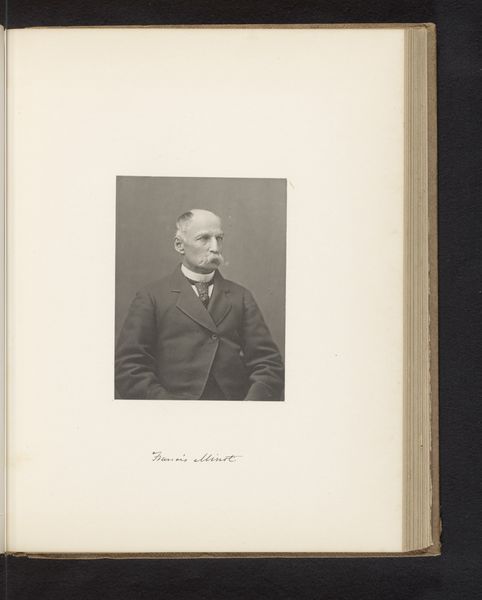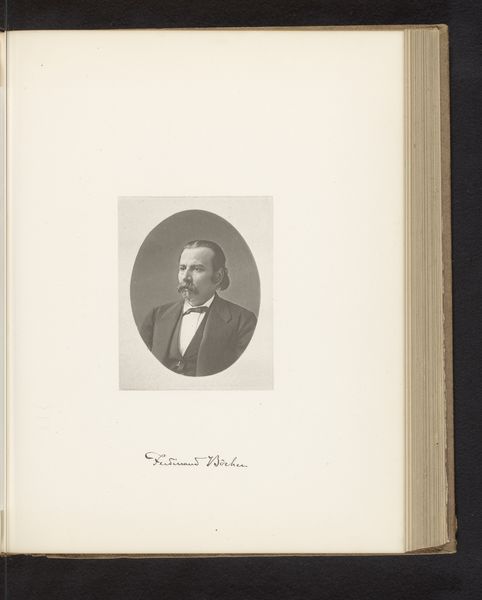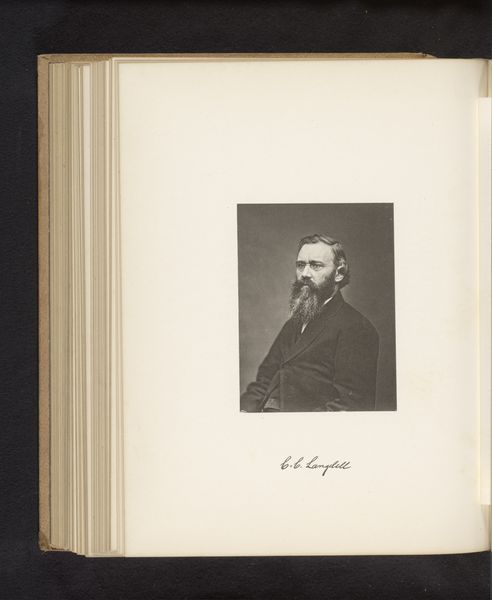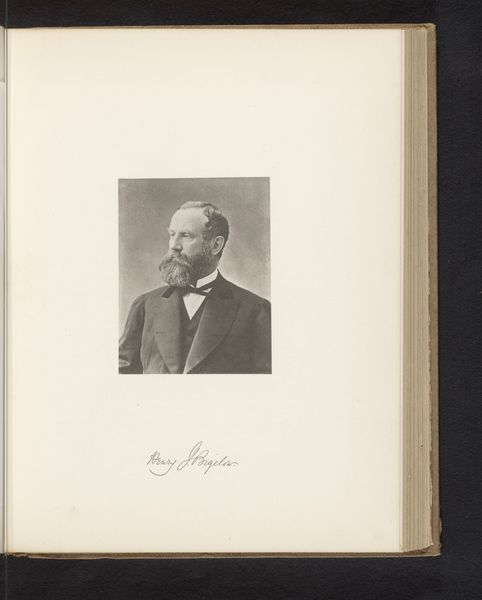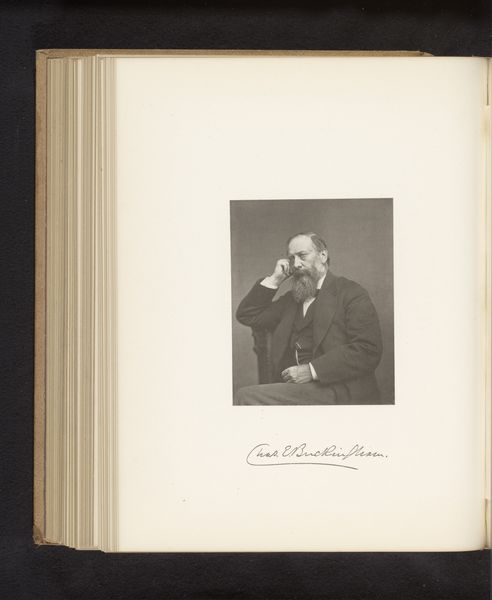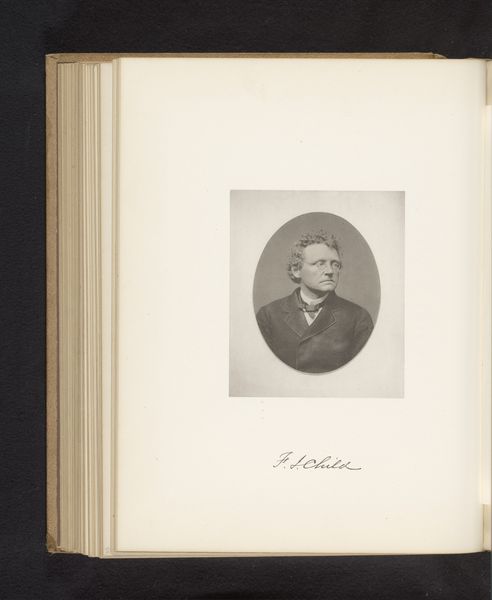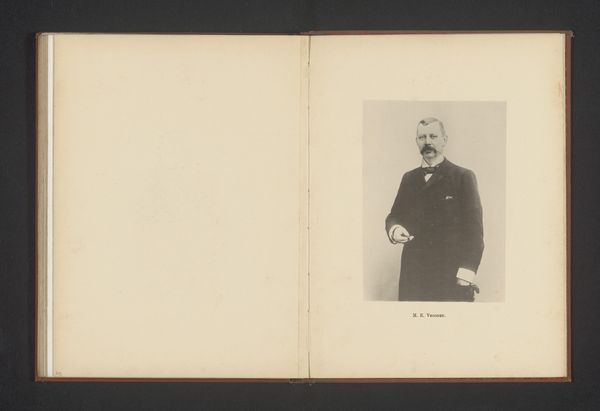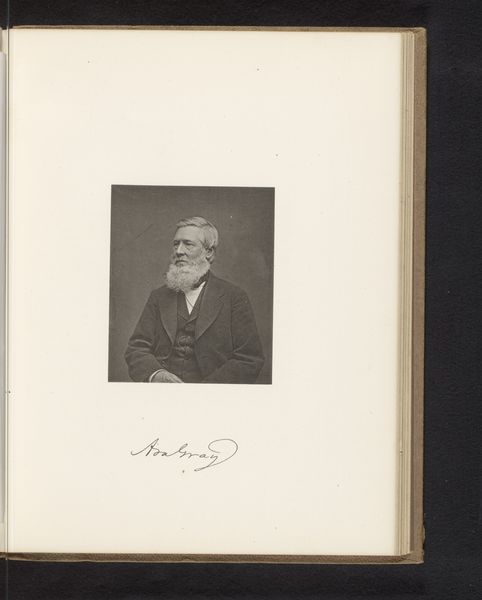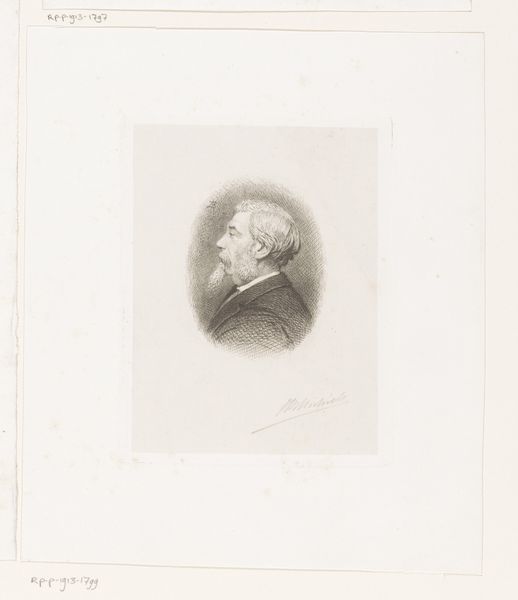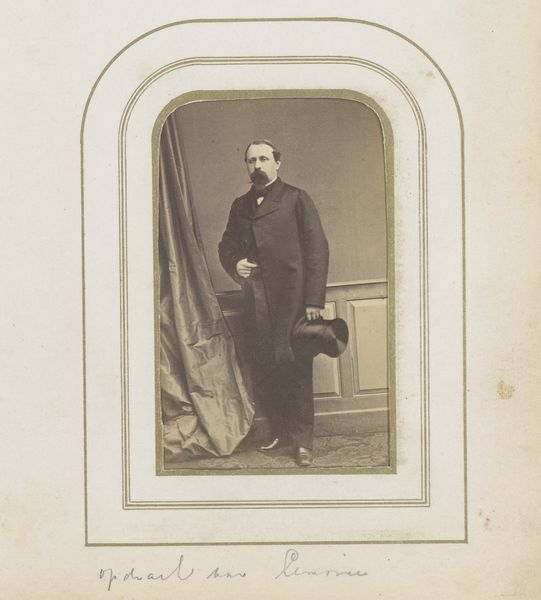
photography, gelatin-silver-print
#
portrait
#
photography
#
gelatin-silver-print
#
realism
Dimensions: height 137 mm, width 102 mm
Copyright: Rijks Museum: Open Domain
Curator: Looking at this gelatin silver print, simply titled “Portret van Daniel Denison Slade,” dating from before 1875, I am immediately drawn to its intimate scale and sepia tones. The overall impression feels contained, yet dignified. What are your initial thoughts? Editor: Dignified is a great word for it. Looking at this image, it makes me think of the photographer’s darkroom practices, the sensitizing of paper, the alchemy of the developer... It's interesting to consider the manual labor that would have gone into producing a seemingly straightforward portrait in that era. Curator: Absolutely. The process speaks to the growing professionalization of photography. Slade, the sitter, was a medical doctor and zoologist; perhaps the portrait served a specific purpose, either to communicate prestige or document him for a broader audience. I think that as photographs circulated more widely in society, they had a huge impact on the creation of identity in a culture. Editor: Good point. Photography also allowed for greater access to images by wider demographics and social classes. Consider that this portrait is printed on gelatin silver, replacing earlier methods like daguerreotypes and wet collodion; by this point photography studios were being established everywhere to make likenesses of public figures accessible to people and institutions across class boundaries. We’re witnessing a gradual democratizing force. Curator: I agree wholeheartedly. The use of the photograph to document someone for an archive could tell its own story. Also, I can’t help but wonder about Slade’s gaze, directed to the side, out of our view; who exactly was this portrait meant to serve, and under what circumstances might viewers have accessed it? Editor: Context is everything! For instance, who printed this portrait, what size, on what substrate, where, when, and with what techniques, could affect our assessment, as well. These decisions impact everything we perceive, influencing value and aesthetic judgements—questions of "finish", paper texture, light capture and tonality, which dictate reception and legibility. Curator: Examining those details offers a much more complete picture of photography's function within the societal structure of the late 19th century, something beyond simple portraiture. Editor: Exactly, moving beyond individual expression helps unlock this work and expand traditional conceptions of photographic art itself!
Comments
No comments
Be the first to comment and join the conversation on the ultimate creative platform.

